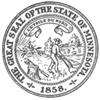These questions are for those applying on motion (Rule 7, 8, 9, 10, or 11).
Please refer to the State of Minnesota Rules for Admission to the Bar for complete information, or From Diploma to License for more detailed instructions.
Click on the questions below for more information.
Expand all
1. What is required to apply and be admitted to the Minnesota Bar?
2. Is there a deadline for my application by motion?
Rule 7A (Eligibility by Practice): The application is evaluated based only on the 60-month period immediately preceding the application. Your practice history during that period of time must meet the qualifications.
Rules 7B (MBE score) and 7C (UBE score): You must apply within 36 months of the date of the qualifying exam being used as the basis for admission.
3. I am an attorney from another state or jurisdiction. How can I be admitted to the Minnesota Bar without taking the exam?
If your educational requirements qualify under
Rule 4A, there are three ways you can be admitted on motion in Minnesota:
- If you have been practicing law for at least 1000 hours per year for at least 36 of the past 60 months, you may be eligible. See Rule 7A for additional requirements.
- If you received a scaled score of 145 or higher on the Multistate Bar Examination (MBE) in the past 36 months and you were admitted in another jurisdiction on the basis of the examination in which you obtained that score, you may be eligible. See Rule 7B for additional requirements.
- If you received a scaled score of 260 or higher on the Uniform Bar Examination (UBE) in the past 36 months, you may be eligible. See Rule 7C for additional requirements.
4. What documents do I need to submit from the other states where I have applied or am licensed?
Please visit our
Application Submissions FAQs for additional information.
5. How will I know without applying if I qualify to apply under Rule 7A?
6. If I am eligible to apply by MBE score or UBE score, which should I choose?
It does not matter. There is no benefit to applying by one rule instead of the other.
7. How can I transfer my MBE (Multistate Bar Exam) score to Minnesota?
Once you’ve checked the jurisdiction in which you are admitted for rules regarding release of score information, visit the NCBE’s
website for information on transferring your score.
8. How can I transfer my UBE (Uniform Bar Exam) score to Minnesota?
Visit the NCBE’s
website for information on transferring your UBE score.
9. I didn’t receive a successful UBE score in another jurisdiction, but it is a passing score for Minnesota. Can I still apply to motion into Minnesota with my UBE score, even though I was not admitted and my exam score was unsuccessful in that jurisdiction?
Yes. As long as you meet the eligibility requirements of
Rule 4A, you received a UBE score of 260 or higher that has been certified by the NCBE as a UBE score, and you apply to Minnesota within 36 months of the date of the qualifying exam.
10. I received a 145+ on the MBE, but did not achieve a passing score in the jurisdiction where I sat for the examination. Can I still apply to motion into Minnesota with my MBE score, even though I was not admitted and my exam score was unsuccessful in that jurisdiction?
11. What if I want to apply in Minnesota on the basis of my UBE score, but I haven’t received my score yet?
If you are registered for the next administration of the UBE or are awaiting exam results in a UBE jurisdiction, you may submit a concurrent UBE application pursuant to
Rule 7C(2) in anticipation of receiving a UBE score of 260 or higher once those results are released. If you do not obtain a UBE score of 260 or higher on the pending exam, you will have 12 months from the date of application to submit a qualifying score or you will be deemed ineligible and your file will be closed.
12. How long does it take to process an application submitted by motion?
For motion applicants, an application typically takes an average of 3 to 6 months to process, but can take longer in some circumstances. See the
Applicant Portal and Other Follow-Up FAQs for information about how to avoid common causes of delay and respond to requests from the Board office.
13. Once I am recommended for admission, can I attend an admission ceremony?
Yes. The Lawyer Registration Office organizes
monthly admission ceremonies in the courtroom of the Supreme Court.
You may also be admitted in absentia through the Lawyer Registration Office. You may contact the Lawyer Registration Office for additional assistance.
Applicants for admission on motion may NOT attend the ceremonies that are held for those applicants that sat for and passed the most current bar exam.
14. Why does the Board encourage applicants to apply under Rule 7A (Eligibility by Practice) instead of applying for an in-house counsel license pursuant to Rule 10?
Due to changes in the Board’s Rules over time, the application requirements and fees for the two application types are functionally equivalent, but while an in-house counsel license expires upon leaving the qualifying employment,
Rule 7A offers permanent licensure in Minnesota. Most applicants prefer to have this future career flexibility since it involves no extra requirements or cost. Feel free to contact the Board office for additional details about this topic.
Some documents require a PDF reader to view properly.

